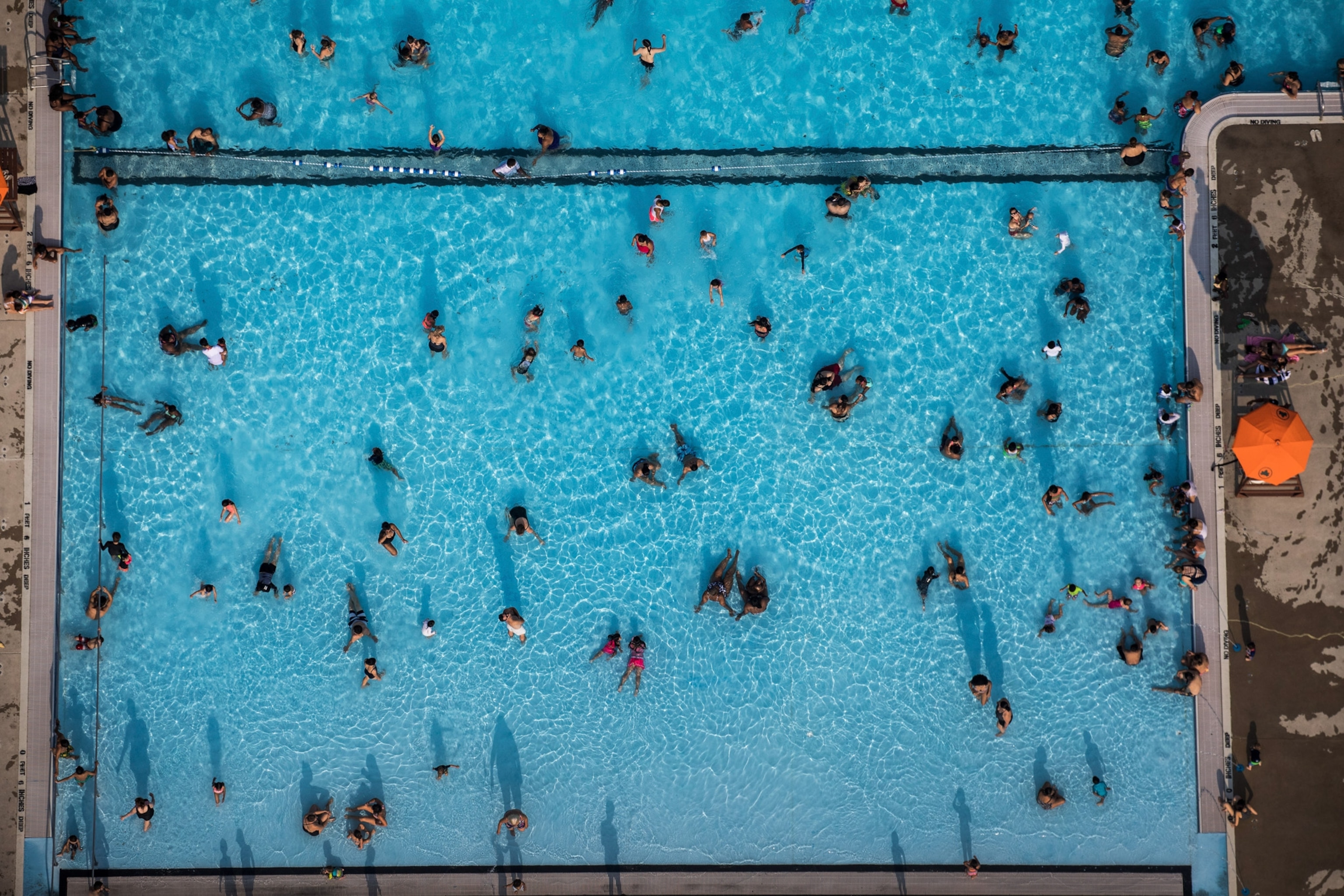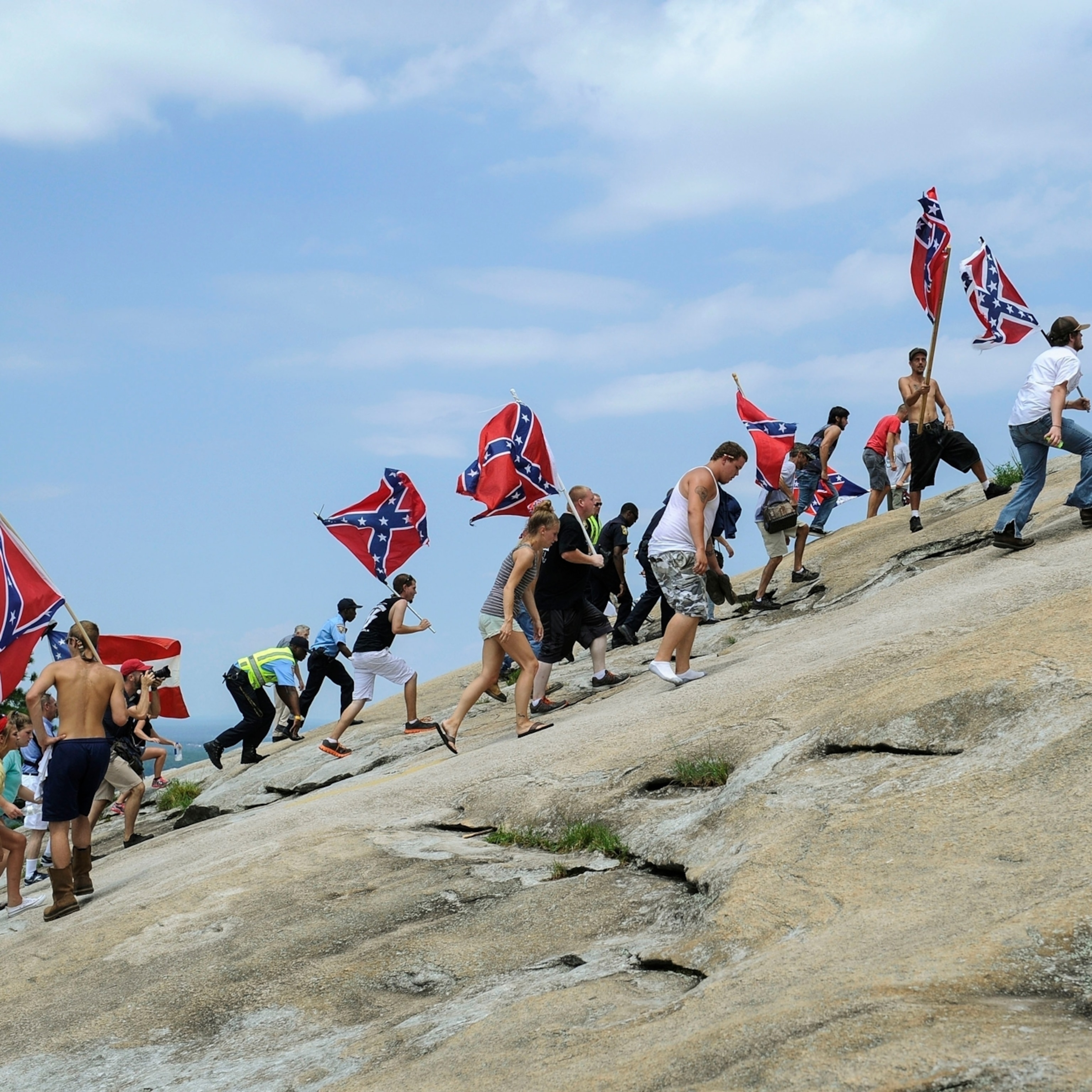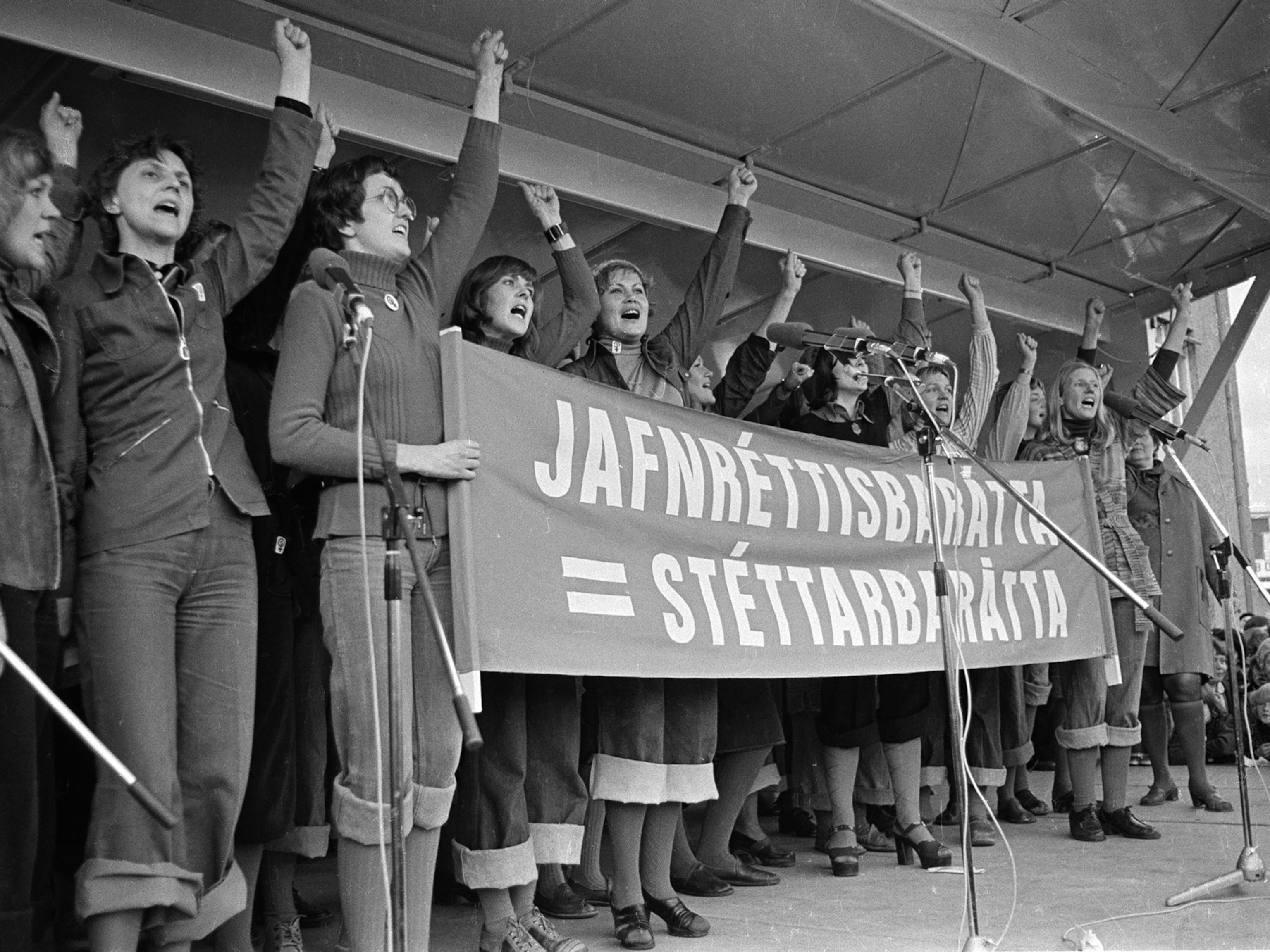Public swimming pools are still haunted by segregation's legacy
From white violence to the rise of exclusive swim clubs, people of color have long faced barriers to American swimming pools.

In the summer of 1949, four boys went to their local pool for a swim. The 13,000-square-foot municipal pool in Beloit, Wisconsin, had been heralded as a “sumptuous structure of artistic workmanship”—a great place to while away a summer’s day.
But when the boys tried to enter, an attendant refused to let them in because of their skin color. They were told to go to the city’s much smaller second public pool—one unofficially designated for Black swimmers—instead.
Though Beloit did not have a formal segregation policy like cities in the Jim Crow-era South, its pool was one of thousands throughout the United States that were off-limits to swimmers of color throughout the 20th century, evidence of a racist belief that people with brown skin would taint the waters for whites.
Today, swimming pools are popular places to relax on a hot summer weekend. But the legacy of segregation lurks beneath the surface of American swimming pools, where social tensions still occasionally boil over.

From bathhouses to community centers
American swimming pools got their start in the late 19th century as public bathhouses—indoor and outdoor pools of clean water designed to stem the spread of disease and instill values of cleanliness into the nation’s growing immigrant population. But pools designed for competitive and leisure swimming were largely the realm of the white elite at the time.
Then, in the early 20th century, Progressive-Era reformers began to champion swimming facilities in working-class areas as a way to solve social problems in American cities. Give a community safe, wholesome opportunities to socialize and exercise, the reasoning went, and juvenile delinquency and social strife would fall.
Municipal pools boomed between the 1920s and 1940s, as a national swimming fad inspired millions to take to the waters for recreational swims and to pool decks for tanning and socialization. Expanded by the Works Progress Administration, a New Deal agency formed during the Great Depression, suddenly almost every city and town in America had a public pool. Open to swimmers of all classes who flocked to their decks and diving boards, these pools became community centers.

Swimming in a time of segregation
But as pools became more popular, the social fissures of the mid-century United States created barriers for people of color. According to historian Jeff Wiltse, a history professor at the University of Montana who wrote the book Contested Waters: A Social History of Swimming Pools in America, earlier generations of the white elite had “perceived working-class whites and blacks as equally dirty and prone to carry communicable diseases.” But European immigration had declined by the 1920s and the country was rapidly changing as millions of Black Southerners fled to the North to escape Jim Crow segregation.
These arrivals fueled northern fears about Black newcomers. So did concerns about the threat Black men supposedly presented to white women, especially at pools. In both North and South, racial segregation became the norm at municipal pools. Some pools were officially white-only pools. Some were built in predominantly Black or white neighborhoods to encourage segregation. And some only admitted people of color on certain days (and often cleaned the pool afterwards).
Black people were not the only non-whites excluded from pools: Latinos and Asian Americans were often forced to use separate facilities, too. In cases where there wasn’t official segregation, Wiltse wrote in his book that “white swimmers imposed and enforced racial segregation through violence,” harassing people of color until they left the pool.
Proponents of pool segregation had racist policies on their side, too. This came in the form of the de facto segregation that occurred when marginalized families were excluded from or driven out of white communities where the pools were located. It was also enshrined in the “separate but equal” doctrine of segregation that the Supreme Court had established in the 1896 Plessy v. Ferguson case. Although the facilities open to Black swimmers were hardly equal, their existence was used as an excuse to resist integrating. (These World’s Fair sites also reveal a history of segregation.)
The push to desegregate pools
As the 20th century progressed, people fought back. One of the nation’s first successful desegregation lawsuits was related to pools. The 1944 Lopez v. Seccombe case involved discrimination against Mexican Americans in San Bernardino, California, where Latino children were only allowed to use municipal pools on Sunday, after which the pools were drained and cleaned. The federal ruling not only forced the integration of San Bernardino’s pools, but a decade later would serve as one of the legal precedents for the landmark 1954 Brown v. Board of Education Supreme Court case, which struck down legal segregation in public schools nationwide.
Despite protests and civil rights litigation, though, pool-related exclusion and violence continued. One of the most blatant examples occurred with the attempted integration of the Fairground Pool in St. Louis, Missouri. One of the largest pools in the world, it could hold tens of thousands of swimmers, but since its 1919 opening it had been designated a white-only pool in accordance with the city’s long tradition of segregation. In 1949, in response to the city’s growing Black population and mounting pressure to eliminate separate facilities, city officials desegregated the pool. (Here's how racist housing policies have led to some oppressively hot neighborhoods.)
On June 21, 1949, about 30 Black children showed up to swim. But white swimmers soon began to threaten them. The taunts became full-blown violence, and thousands of white rioters flooded the pool, beating and injuring the Black youths. Two people were stabbed and at least 10 people injured during the melee, and the incident made front-page news. St. Louis promptly re-segregated the pool and only integrated it again when directed to do so by a federal judge a year later.
Even after the Brown case mandated the integration of public schools, white people argued that public pools were another matter entirely. Though civil rights protesters pushed to desegregate whites-only pools and beaches, they only made gains in northern cities—and when those pools were forced to integrate, white people largely stopped patronizing them. The Fairgrounds Pool had such an extreme drop-off in attendance that it closed in 1956, just six years after it reintegrated.
The rise of private pools
The 1964 Civil Rights Act outlawed segregation in public places. But by then, the decline of municipal pools was already in full swing as members of the white middle class began to move from cities to suburbs and invest in private pools. Fewer patrons of public pools meant less justification for their funding and upkeep.
“Cities began to underfund maintenance,” Wiltse said in an interview with National Geographic. “Pools became dilapidated and required major repairs.” Rather than pay for pools, cities began to close them down—which he says was “a consequence both of desegregation and suburbanization, which led to a loss of tax revenue.”
Meanwhile, the new private swim clubs that arose in majority-white suburbs shut out non-white members with high membership fees and exclusive membership requirements. Some clubs banned people of color outright; others shut them out by only allowing members who lived within a certain distance, thereby using racist housing policies as a way to ensure an all-white membership.
Wiltse wrote in his book that the appeal of club pools “was the assurance of not having to swim with black Americans.” He says that legacy can still be felt in modern public pools. “There’s been a shift toward people accessing recreational services through private rather than public provision,” says Wiltse. “Most private club swimming pools have an almost exclusively white membership.”
Civil rights attorney and legal professor Taunya Lovell Banks agreed in her 2014 paper, Still Drowning in Segregation: Limits of Law in Post-Civil Rights America. “Ironically, those groups for whom public swimming pools were initially created, working class and impoverished families in densely populated urban areas, are today the groups with the most limited access to swimming facilities,” she wrote, citing a 2006 study showing that white people are more likely to be swimmers—and that being Black reduces the odds of being a swimmer by 60 percent.
America’s history of race and pools has another bleak legacy: Black and Latino children and adults are less likely to learn to swim—and far more likely to drown—than their white counterparts. According to a 2017 USA Swimming Foundation study, nearly 64 percent of Black children and 45 percent of Latino children can’t swim, compared to 40 percent of white children. The Centers for Disease Control and Prevention also reports that between 1999 and 2010, Black children drowned in swimming pools at a rate of up to 10 times higher than their white peers.
Sixty years after those four Black boys were shut out of their local pool in Beloit, Wisconsin, the country still faces racial tensions at its pools. Wiltse points to a 2009 incident in which a children’s day camp from Philadelphia visited a suburban country club pool. When the day camp attendees, most of whom were children of color, arrived at the pool, they reported hearing racial slurs; the next day, the pool’s leadership prohibited the group’s return. The case sparked a Justice Department civil rights investigation and a 2012 settlement.
There have also been more recent highly publicized incidents—from the Black teenager who was slammed to the ground by a police officer amid tensions at a Texas pool in 2015 to the Black mother and son who were asked to leave a Florida pool for talking across the lap lines in 2020.
“Swimming pools are a uniquely intimate space,” Wiltse says about why these incidents continue to occur. “Using a pool heightens the anxieties people have about interacting with others who are different than themselves.”








